WHY IS THE MORTALITY OF STORKS SO HIGH?
Only 10% of storks that migrate west survive their first three years of life. The journey is very dangerous!
This mortality is too high for a self-sustaining stork population!
Flying west or east? There are two migration routes for white storks!
Affenberg storks belong to the western White stork population and fly past the Mediterranean Sea to the west. They breed west of an imaginary line that runs north to south through Germany. Storks that breed east, belong to the eastern population, and take the eastern route.
Limited food resources
White storks feed on snails, worms, insects, frogs, and mice…which are mainly found in meadows and in wetlands.
By draining wetlands, straightening rivers to gain agricultural land, or building roads, the storks‘ habitat is destroyed and there is not enough food for their brood.

Intensive agriculture
In earlier times when agriculture was sustainable storks even benefitted from humans!
Nowadays, however, storks can hardly find any food. Agriculture is highly intensive using a lot of pesticides and cultivating monocultures.
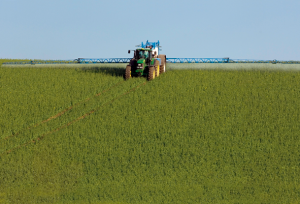
Plastics in the nest
Cords, elastic bands, and plastic bags are often accidentally used as nesting material.
This is dangerous because storks can tangle their feet, injure themselves or even suffocate.
Plastic waste also makes the nest resistant to water, which can become an issue for those the young storks wanting to stand in the water and cool off.
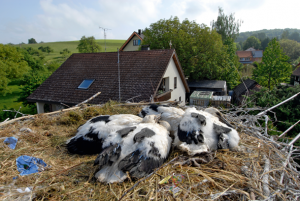
Deadly food
Due to the lack of habitat, storks often look for food on waste disposal sites.
However, this “food paradise” is very dangerous for the storks, as they often eat poisonous food. Rubber bands and cords are mistaken for worms or snakes and fed to the young. This can cause very painful deaths.
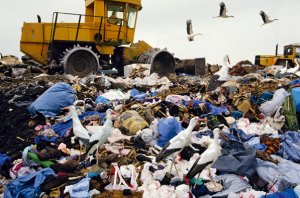
Traffic accidents
It is difficult for storks to estimate the speed of vehicles.
A lack of habitat forces storks to search for food on the roadside. The risk of collision is high!
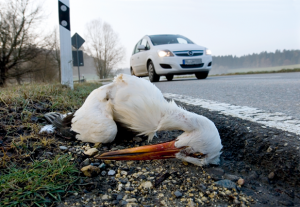
Water towers
In France and Spain especially, storks use water towers as elevated and ‘safe’ resting places. However, if they slide from the concrete edge into the water funnel, the water towers become a deadly trap!
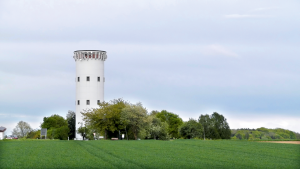
Electrocution
Electrocution is the most common cause of death.
Especially inexperienced young storks that do not recognise dangerous electricity pylons and use them as resting or nesting place. The risk of an electric shock is very high for a bird as big as a stork.
Furthermore, the animals hardly recognise thin power cables whilst in flight, often leading to fatal collisions.
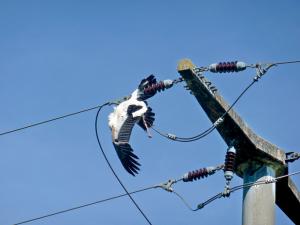
Drought and climate change
Most Affenberg storks spend the winter in southern Spain or in North Africa.
In the Sahel region of Africa they almost only feed on insects and larvae during certain times. During long periods of drought, the vegetation dries up and the insects disappear. The storks lose their most important source of food!

Pesticides
In the wintering areas in North Africa, a large amount of pesticides are often used to protect agricultural fields from large swarms of locusts.
In some countries, illegal pesticides such as DDT are still used. If storks feed on poisoned grasshoppers, it can cause death.
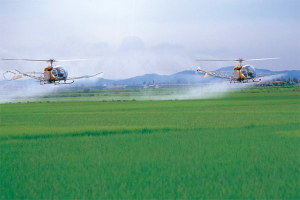
Hunting
In some African countries storks end up in the saucepan!
However, the problem of stork hunting is minor compared to the other dangers mentioned.
Predators such as foxes, hyenas or jackals can become a threat for weak and inexperienced storks.






